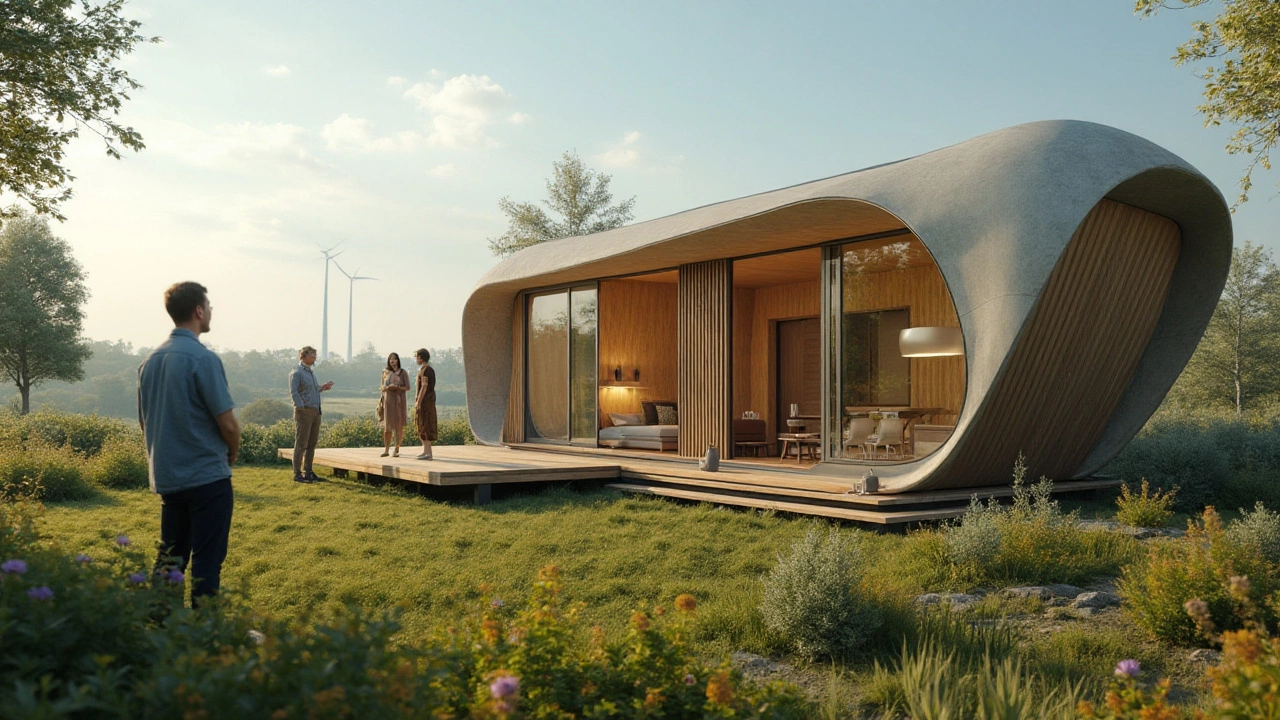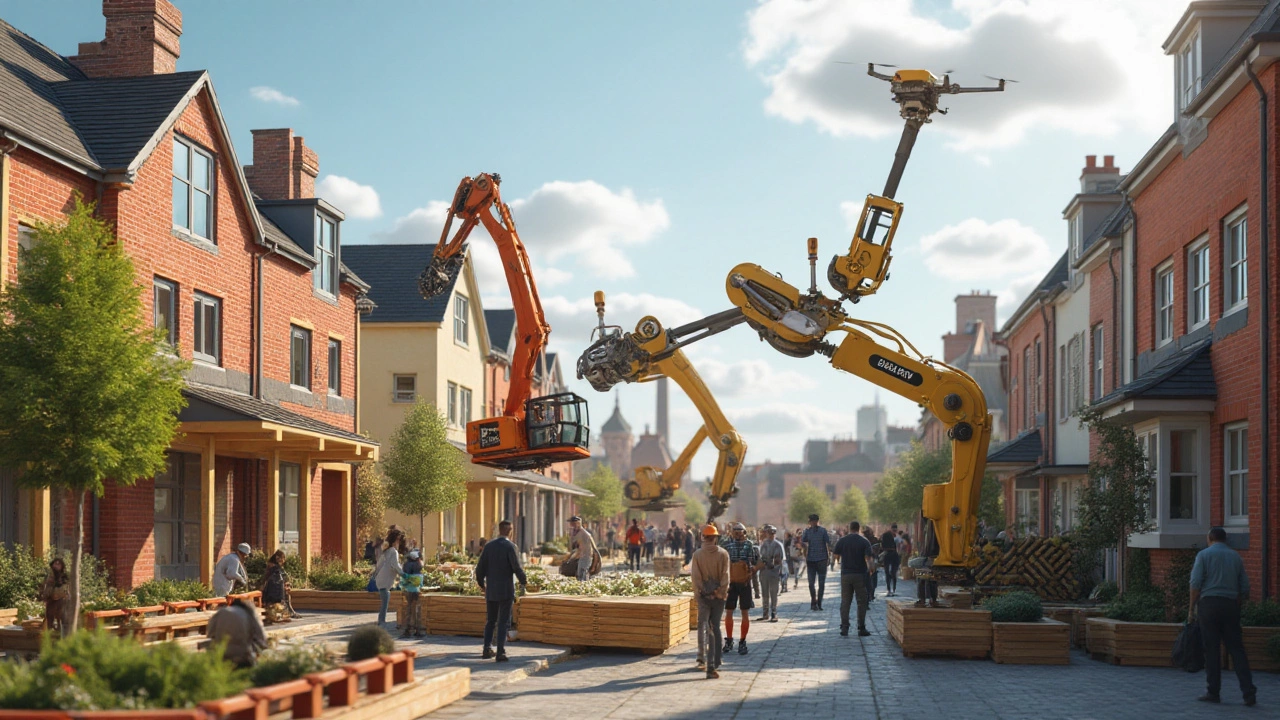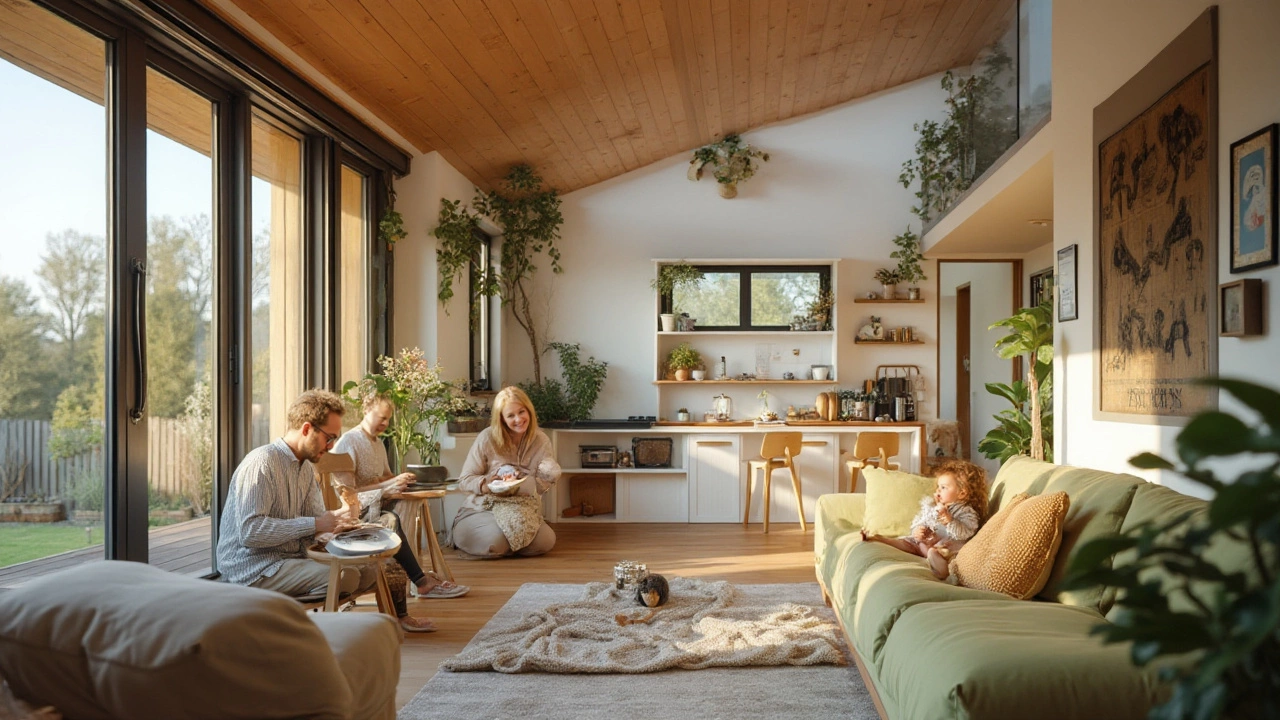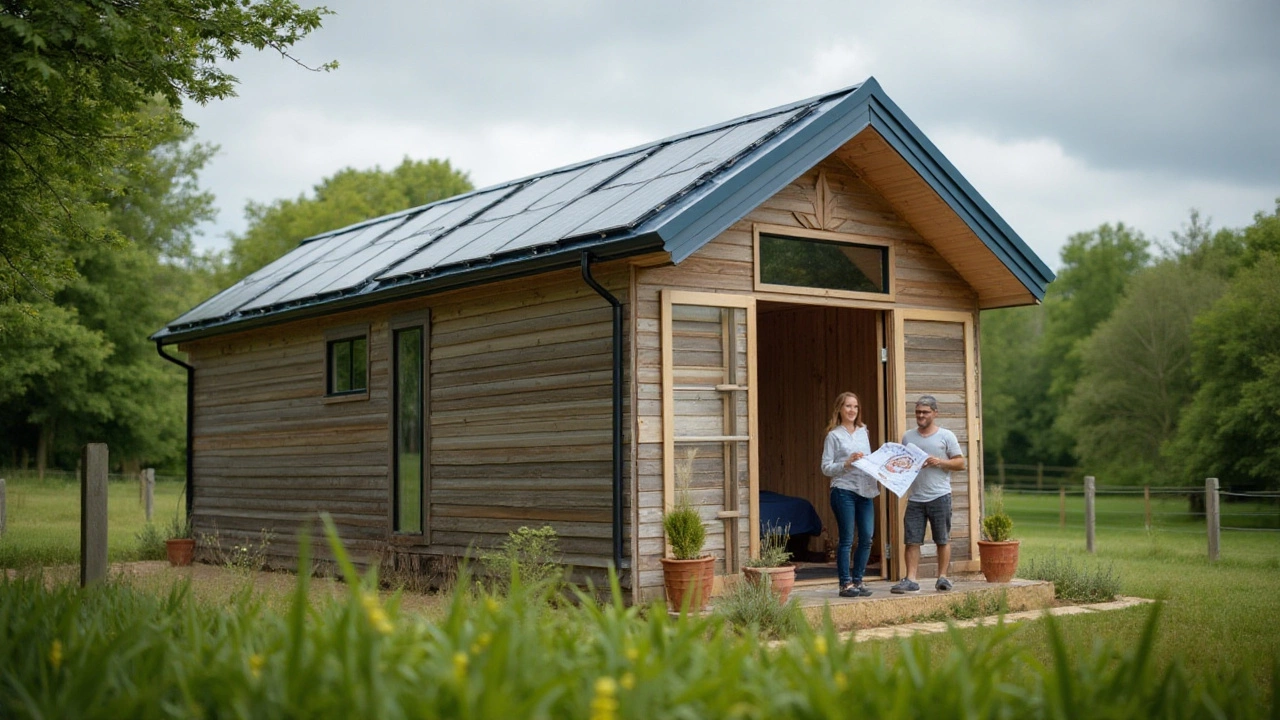Building a home doesn’t have to burn a hole in your pocket, especially in today’s world where innovation meets tradition. As we step into 2025, the landscape of home construction is transforming, giving rise to affordable alternatives that were once thought improbable.
With the right knowledge, building a cost-effective home can be an achievable goal. From modular designs to sustainable materials, there are myriad ways to keep costs down while still crafting a cozy and functional living space. Whether you're a first-time builder or someone looking to downsize, knowing where to start can make all the difference.
Join us as we delve into the realm of affordable home building. We'll explore modern techniques and solutions designed to provide the perfect foundation for your new home, one that aligns with both your budget and your lifestyle.
- Understanding Budget-Friendly Building
- Exploring Modular Homes
- The Rise of Tiny Homes
- Sustainable and Eco-friendly Materials
Understanding Budget-Friendly Building
When you think of building a home from scratch, ideas of spiraling costs and endless complexities might cloud your vision. But here's a refreshing truth: creating your very own abode doesn't have to be an extravagant affair. If you yearn for a space to call your own without stretching your wallet too thin, understanding the dynamics of budget-friendly building is your first step. The concept hinges on one pivotal idea: making savvy choices. And these choices range from selecting efficient building methods to opting for materials that save money without compromising on quality.
Let’s begin with a fundamental principle: location is a key player in determining construction costs. Building in a less populated area can significantly reduce land expenses. Similarly, the site’s proximity to utility lines can also substantially affect budget considerations. Now, consider the house's design. Compact and minimalistic designs often prove more cost-effective. Not only do they use fewer materials, but they also take less time to build, which translates to savings on labor costs.
One might ponder, "What about the materials?" In the realm of affordable choices, the materials you select play a colossal role. Regions have traditionally championed locally-sourced materials which naturally cut down transportation costs and promote sustainability. Innovative products like Insulated Concrete Forms (ICFs) and Structural Insulated Panels (SIPs) have further revolutionized the landscape by providing excellent insulation at a reasonable cost, often translating to long-term energy savings.
"The key is to be strategic about where you place your spending," suggests Mark Hayward, a renowned sustainable builder. "It’s about prioritizing what truly adds value and essence to your home."
Technology, too, doesn’t lag behind. Advanced construction technologies, such as 3D printing and pre-fabricated components, have steadily gained traction. They often result in reduced wastage and decreased labor requirements, directly benefiting your pocket. While labor is another crucial consideration, it shouldn’t always be about hiring the bare minimum. Rather, choose skilled professionals who can perform their work more efficiently, effectively cutting down time spent on the project.
For those eager to delve deep into cost-effective housing, an eye on governmental schemes or financial incentives can also tip the scales in your favor. Some regions offer tax credits or discounts for eco-friendly and energy-efficient homes. Staying informed about these programs can be the secret ingredient to trimming down building costs. Making informed choices goes a long way in making home-building a pursuit packed with promise rather than peril.
This journey into the realm of building on a budget emphasizes that with the right approach, aspirations can transform into reality. Beyond just saving money, it paves the way for thoughtful, innovative, and sustainable homes, reflective of modern sensibilities. Whether it’s harnessing technology or tapping into sustainable materials, today’s builders have more opportunities than ever to ensure a pleasant and cost-conscious path to homeownership.

Exploring Modular Homes
Modular homes are quickly becoming a cornerstone of the affordable housing movement. They're built in sections, or modules, in a controlled factory environment, which is then transported and assembled on site. This process not only reduces waste but significantly cuts down on construction time when compared to traditional building methods. With the growing demand for affordable homes, modular design offers a fast and efficient solution without compromising on quality. Many find this method appealing because of its cost-effectiveness, flexibility in design, and the ability to incorporate modern and sustainable technologies. Whether nestled in a sprawling suburb or tucked away in a remote countryside, modular homes can be customized to fit any landscape or lifestyle.
One standout advantage of modular housing is undoubtedly its speed. On average, a modular home can be completed in about half the time of a conventional build, some even faster depending on the design's complexity. This efficiency does not mean cutting corners; indeed, modular homes often undergo more rigorous inspections and standards in the factory setting. It's not surprising that such homes are built to last, with many boasting energy efficiency ratings that rival traditional homes. Furthermore, the ability to control the work environment means fewer weather-related delays, saving both time and money for the homeowner. The precision engineering involved allows for high-quality, repeatable outcomes, ensuring that each home is perfectly suited to its purpose.
There is an increasing array of design possibilities with modular homes, allowing homeowners to personalize their living spaces in ways once thought impossible. Advanced computer-aided design (CAD) systems allow for precise planning, right down to the smallest detail. From sleek and modern designs with expansive windows and open layouts, to more traditional styles emulating classic architecture, modular homes can satisfy diverse tastes and requirements. Not to mention the capability to incorporate cutting-edge smart home technology seamlessly. As opposed to early models, today's modular homes are versatile and adaptable, ready to embrace future innovations in building materials and design principles.
A key factor in the rise of modular homes is their contribution to sustainable building practices. As sustainable materials become more prevalent, modular constructions are primed to lead the charge in eco-friendly homebuilding. With many factory setups now utilizing green energy sources and recyclable materials, modular homes often have a smaller carbon footprint compared to their traditionally built counterparts. Additionally, reduced site disturbance and minimal waste generation make them a favorable choice for environmentally conscious buyers. According to a report by the Modular Building Institute, the use of modular construction can reduce building waste by up to 90%—a significant statistic for those seeking a greener lifestyle.
"Modular construction represents a key opportunity to drastically reduce the time, cost, and environmental impact of building beautiful homes," says Peter Ward, CEO of BuildSmart, a leading firm in modular architecture.
Despite the numerous benefits, there are some logistical challenges to consider. These include transportation costs and the requirement for a specific skill set to assemble the modules on site. However, these obstacles are rapidly diminishing as the technology and methodologies surrounding modular homes continue to advance. Coupled with an expanding market and increased investment, experts believe the sector is set to grow exponentially in the coming years. For anyone looking to build an affordable home in the modern era, modular homes certainly offer compelling advantages that are hard to ignore.

The Rise of Tiny Homes
In recent years, the rise of tiny homes has been nothing short of a housing revolution. These pint-sized dwellings are becoming increasingly popular, appealing to a diverse range of people looking to downsize, simplify their lives, and reduce their environmental impact. The allure of tiny homes isn't just their charming, minimalist aesthetic; it's also their undeniable practicality in an era where sustainable living and cost-effective housing solutions are in demand. Unlike traditional homes, which often come with hefty mortgages and high maintenance costs, tiny homes offer a wallet-friendly alternative. With construction costs significantly lower than conventional homes, they provide an opportunity for homeownership that might otherwise be out of reach. Enthusiasts are drawn to the idea of living with less and often find themselves prioritizing experiences over possessions when they make the switch.
The appeal of tiny homes extends far beyond their financial benefits. For many, living in a small space encourages intentional living and forces a level of practicality and creativity in design. The movement has given rise to ingenious storage solutions and multifunctional furniture that make every square foot count. From beds that fold into walls to chairs that double as storage units, these homes are a masterclass in efficiency. While the idea of trading in larger living quarters for something more compact might seem intimidating initially, tiny home dwellers often report a sense of freedom that comes from paring down their belongings and focusing on what truly matters. Embracing the tiny home lifestyle often involves decluttering material possessions and, with it, the mental clutter that can accompany a more consumer-driven lifestyle.
A report from the Environmental Protection Agency highlights that tiny homes are 89% more resource-efficient than traditional homes. With energy use significantly reduced and fewer materials required in their construction, tiny homes are a robust step towards minimizing environmental footprints. Their small size means they can integrate renewable energy sources, like solar panels, with greater ease. Some are even constructed using recycled materials, adding an extra layer of eco-friendliness to the mix. As people become more conscious of their environmental impact, tiny homes symbolize an appealing harmony between living comfortably and sustainably.
"Tiny homes offer more than a living space; they represent a movement towards conscious living where less is more," says architect and small-space living advocate, Elizabeth Turnbull.
Recent trends show that tiny homes are not just a fleeting fad; they are a practical housing solution for the future. Urban areas are seeing a rise in tiny home communities, where like-minded individuals can form tight-knit communities with shared values of simplicity and sustainability. Legislation is gradually catching up, with many areas now recognizing and integrating tiny homes into their housing plans to accommodate a growing demand. The adaptability of these structures means they can be positioned in various locations, from urban lots to countryside retreats. For those seeking adventure, mobile tiny homes offer the flexibility to travel without leaving home comforts behind. As the housing market continues to evolve, it's clear that tiny homes will remain a significant contender in the realm of cost-effective housing.

Sustainable and Eco-friendly Materials
The quest for sustainable solutions has never been more vital, especially in the realm of home building. Embracing eco-friendly materials is not just a trend; it is a necessity for our planet and the future generations. Sustainable home construction revolves around using cost-effective housing strategies that minimize environmental footprints and promote energy efficiency. At the core of this movement lies the need to balance durability, affordability, and eco-consciousness without compromising aesthetics.
One of the primary materials leading this shift is bamboo, known for being a rapidly renewable resource. With a growth rate that outpaces most traditional woods, bamboo has become a darling of the construction world. Not only is it lightweight and resilient, but it also requires fewer resources to cultivate and process, drastically reducing the carbon footprint associated with its production. In comparison to conventional building materials like steel and concrete, bamboo stands out as the more sustainable choice, emphasizing the potential for affordable homes to also be green.
Cork is another intriguing material gaining traction. Harvested from the bark of the cork oak tree, it is both renewable and recyclable. Cork’s insulating properties make it ideal for reducing energy costs, while its natural resistance to moisture and pests enhances its appeal as a building material. In other words, choosing cork not only supports ethical farming but also supports the creation of more energy-efficient homes.
"Using sustainable materials gives homeowners more than just a house; it offers them hope for a sustainable future," notes architect and environmental advocate Michael Green, who’s been at the forefront of eco-friendly architecture.
The innovative use of recycled steel and reclaimed wood in construction showcases another facet of this eco-conscious endeavor. Recycled steel, in particular, reduces waste and energy consumption associated with manufacturing new steel. Reclaimed wood, sourced from old barns, factories, and warehouses, provides a rustic charm while minimizing deforestation. The inclusion of such materials is crucial for those wanting to blend tradition with modern eco-friendly practices.
Beyond these materials, strategies like earthbags and rammed earth construction are showing promise for both their cost-effectiveness and environmental benefits. Earthbag building utilizes local soil encased in specially made sacks, providing a unique, durable structure. Meanwhile, rammed earth creates walls by compacting a damp mixture of subsoil, offering natural insulation. These methods not only reduce transportation costs and emissions but also ensure that homes are perfectly adapted to their environmental context.
The rise in popularity of sustainable homes has also been fueled by technological advancements like solar panels and rainwater harvesting systems, making it easier to integrate renewable energy sources into home designs efficiently. These systems pay back their costs over time, reducing energy bills and enhancing the property’s value, appealing to the budget-conscious builder. In a world where building a home may seem daunting due to financial constraints, readily available eco-materials offer an appealing alternative.
Ultimately, these choices reflect a growing awareness and responsibility towards the planet. Sustainable and eco-friendly materials in home construction are not merely options but rather essential steps towards creating viable living spaces that respect natural resources. By choosing these materials, builders and homeowners alike invest in a future where affordable homes do not come at the Earth's expense, proving that sustainability and cost-effectiveness can indeed go hand in hand.
